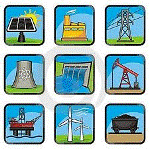Department of Agricultural Economics: Undergraduate Research

Op-Eds from ENSC230 Energy and the Environment: Economics and Policies
Date of this Version
Fall 12-23-2017
Document Type
Article
Citation
Op-Ed from ENSC 230. Energy and the Environment: Economics and Policy, University of Nebraska-Lincoln, Department of Agricultural Economics, Fall 2017
Abstract
ENSC 230. Energy and the Environment: Economics and Policy
12/7/2017
Palm Oil: The Hidden Costs
Lurking behind your soaps, cosmetics, pantry groceries, and household cleaning supplies is a product killing endangered species in Southeast Asia. This same product is destroying the survival mechanisms for local communities in Southeast Asia while pumping large amounts of greenhouse gas emissions into the atmosphere. To keep its identity hidden, it uses over twenty different names on ingredient labels. What is this product? Palm oil. Palm oil is the most widely used vegetable oil in the world and increased demand for palm oil in our various supermarket products has doubled production in the recent decade (Vijay, 2016).
Palm oil is not all bad. Palm oil is a productive crop, producing up to ten times more than any other vegetable oil crop per hectare (Tunnicliffe, 2013). This same product has the potential to provide renewable energy utilizing the production by-product for methane gas energy as well as biofuels in the local community (Cheau, 2017). Additionally, with the health risks of trans fats, palm oil is an attractive alternative as trans fat free oil. However, the issue is not the use of palm oil and its by-products, but the growth in production as palm oil thrives in areas currently covered in forests.
Consumption of palm oil has grown fourfold since 1990. The trajectory of this growth is expected to continue with production tripling by 2050. The growing demand generates tens of billions of dollars in revenue and employs millions in Southeast Asian countries. The story is that conserving the rainforests from palm oil production puts this economy at risk, but only because the current formula does not account for the externalities of deforestation.
Rainforests in Southeast Asia are a critical source of food, medicines, and materials for local communities. Many local communities have been removed from lands with palm oil production capabilities and often must work at the plantations for low wages or move to urban slums. This is an externality not accounted for in the current economic formula.
Tropical rainforests regulate weather patterns and act as buffers from storms. They maintain watershed and river health for agriculture as well as provide habitat for endangered species. This is an externality not accounted for in the current economic formula.
The conversion from rainforest to plantation had led to forest fires polluting the air of residents, closing schools temporarily, and suspected of causing numerous respiratory infections (Tabuchi, 2016). This is an externality not accounted for in the current economic formula.
Lastly, deforestation emits massive amounts of greenhouse gases as these rainforests have served as carbon sinks for centuries. According to NASA, tropical rainforest deforestation accounts for 10% of annual anthropogenic carbon emissions (Tunnicliffe, 2013). This is an externality not accounted for in the current economic formula.
Overall, the economic decision to convert rainforests into plantations seems attractive when the externalities are pushed on local communities instead of plantation companies. This status quo is dangerous because as yield capabilities and technology in palm oil production improve, it encourages more land to be converted as well as expands production into nations with vulnerable forest habitats. For example, with most suitable land for oil palm in Southeast Asia converted many palm oil companies are now investing in Africa (Carrasco, 2014). Currently, only 2% to 7% of oil palm plantations in Africa are coming from areas that were previously forests; however, in Southeast Asia this is 45% and 31% in South America. These percentages cannot occur in Africa as Africa contains a high density of species at risk of extinction (Vijay, 2016).
Coalitions exist working towards sustainable palm oil; however, progress is slow. According to the Roundtable of Sustainable Palm Oil, only 20% of global palm oil production is sustainable. With the projected demand growth for palm oil, I do not see 20% being enough. Leaving this commitment as voluntary will not be enough. The habitat, local communities, and endangered animals do not have decades to solve this problem. Therefore, palm oil importing nations need to commit to only sustainable palm oil.
Goods containing palm oil need to be required to have federally mandated labeling on whether the goods were produced sustainability or unsustainability. This labeling would allow consumers to become educated on how their products are made and make the determination of what goods to purchase based on the new information. Allowing three years before mandatory labeling takes affect would allow companies sufficient time to analyze and change their supply chain without economic challenges ensuing in order to avoid consumer push back if products were previously made with unsustainably produced palm oil. We’ve demanded sustainable practices in the form of labeling from foreign nations in the past and succeeded. If we can do it once, we can do it again.
Included in
Environmental Indicators and Impact Assessment Commons, Natural Resources and Conservation Commons, Oil, Gas, and Energy Commons, Other Environmental Sciences Commons

